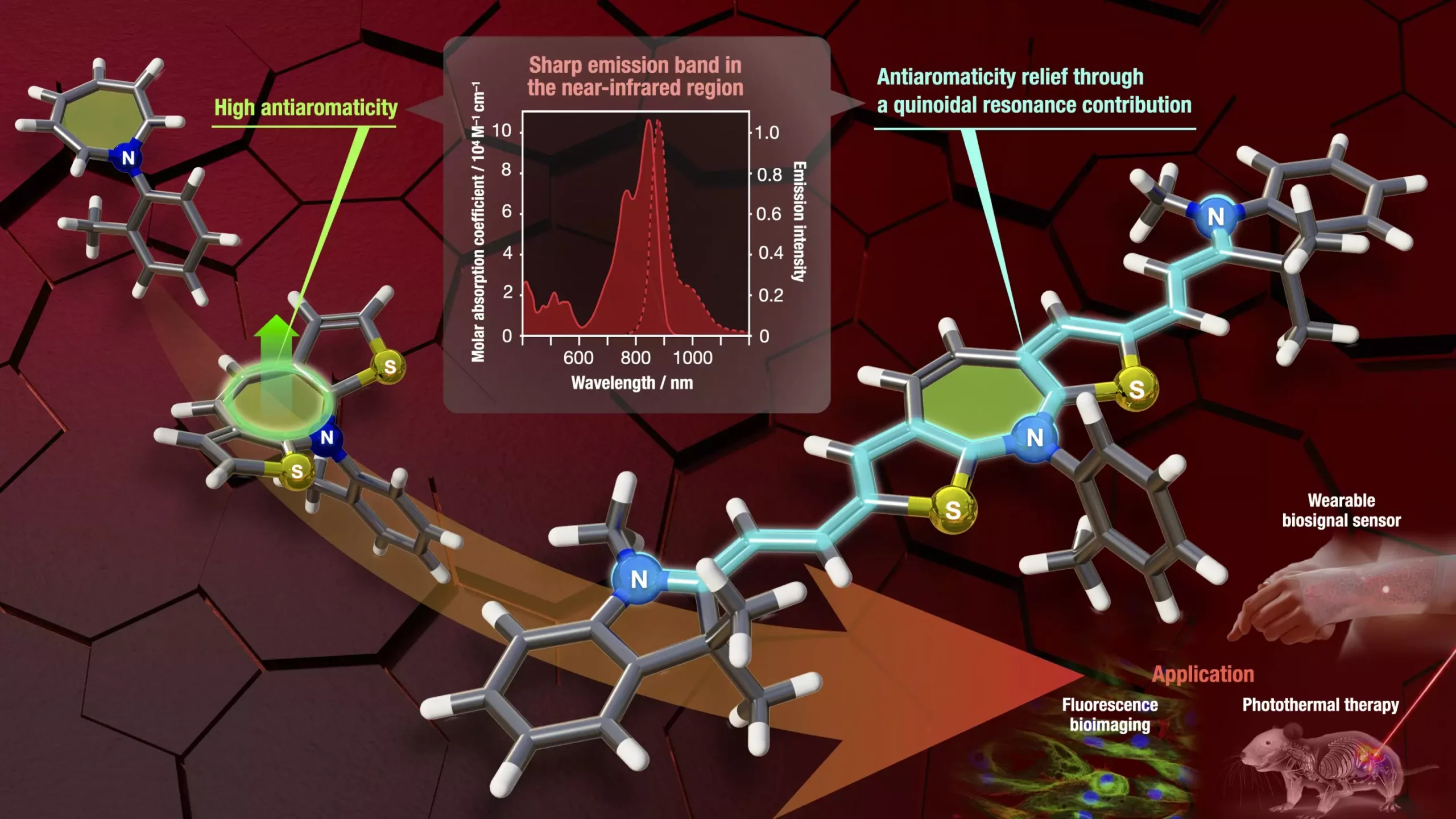Spectroscopy, a scientific field that studies the interaction between light and matter, heavily relies on the understanding of absorption and fluorescence properties of molecules and materials. An absorption band signifies the range of wavelengths at which a material absorbs light, leading to the transition of electrons to higher energy states. Conversely, fluorescence bands correspond to the emission of light after a substance has absorbed light, with the emitted light having a longer wavelength than the absorbed light. These photophysical properties play a fundamental role in various research areas, including health care, optoelectronics, and materials science.
In recent groundbreaking research published in Angewandte Chemie International Edition, a research group led by Associate Professor Masahito Murai and Professor Shigehiro Yamaguchi has developed antiaromatic molecules with absorption and fluorescence bands in the near-infrared (NIR) region. This achievement holds immense potential for advancements in health care, optoelectronics, and materials science. The NIR region, specifically the wavelengths ranging between 800 and 1100 nm, is known as the “optical window of living tissue.” The unique advantages offered by this region, such as deep biological imaging, photodynamic therapy, and photothermal therapy, make it essential in medical applications.
Despite the demand for organic molecules that exhibit absorption and emission properties in the NIR region, conventional dyes often face challenges. Reduced solubility and increased lipophilicity are common problems due to strong interactions within largely extended π-electron systems. These issues hinder the moldability and processing of molecules for use as electronic materials and their application in biological imaging.
The research team’s success lies in the fusion of thiophene, a less aromatic heterocyclic ring, with azepine. This fused ring structure effectively balances antiaromatic and polymethine characters, increasing the likelihood of electronic transitions in antiaromatic compounds. Consequently, this breakthrough enables the acquisition of absorption and fluorescence wavelengths in the NIR region. This achievement opens the door to the development of diverse NIR luminescent materials.
To investigate the potential of azepine derivatives with electron-accepting groups, the team designed and synthesized a series of these compounds. Single-crystal X-ray structure analysis revealed significant structural differences between the derivatives. The curved dibenzoazepine exhibited absorption and fluorescence at shorter wavelengths, while the highly planar dithienoazepine analog exhibited absorption and fluorescence at wavelengths longer than 700 nm.
Moreover, the team demonstrated the utility of the molecular framework by synthesizing a dithienoazepine with cationic indolium groups. This particular derivative displayed a strong absorption band at 846 nm and a narrow fluorescence band at 878 nm. The research showcases the potential of dithienoazepine as a core for achieving long-wavelength absorption and emission, despite its small tricyclic skeleton.
The development of organic molecules with strong absorption and fluorescence properties in the NIR range has far-reaching implications in various fields. Fluorescence imaging, sensing, and materials science can substantially benefit from these advancements. The focus on deep-tissue imaging and non-invasive diagnostics highlights the commitment of Nagoya University to pushing the boundaries of science and innovation in healthcare through cutting-edge technology.
The research conducted by Associate Professor Masahito Murai and Professor Shigehiro Yamaguchi provides a breakthrough in the field of near-infrared luminescent materials. The fusion of thiophene and azepine paves the way for the development of diverse organic molecules that exhibit absorption and fluorescence properties in the important NIR region. These advancements have significant implications for health care, optoelectronics, and materials science, offering new opportunities for improved medical devices, deep tissue imaging, and non-invasive diagnostics. The exciting potential of this research highlights the continued commitment of scientists and researchers to drive innovation and improve healthcare outcomes.



Leave a Reply